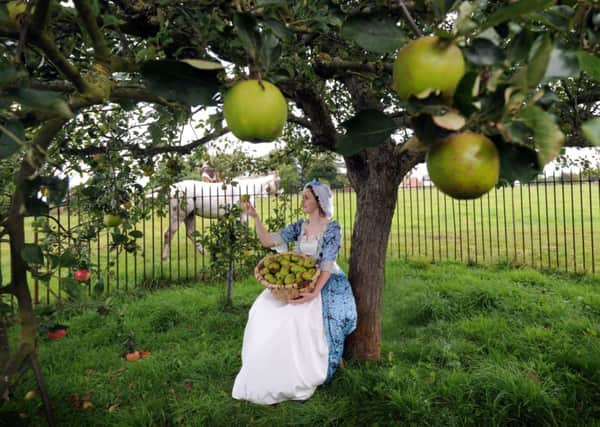Country & Coast: National Apple Day


Sadly, however, the idea of promoting our rich heritage of home-grown apples seemed to have been lost on big supermarket chains, and for years it’s been left to farmers’ markets, garden centres, historic houses and a few dedicated independent greengrocers to keep traditional apples available to the public.
One of the best places to find traditional northern varieties - there are more than 100 different kinds, including the most popular Yorkshire varieties - is Lotherton Hall near Aberford, West Yorkshire.
Advertisement
Hide AdAdvertisement
Hide AdEvery time I enter a supermarket in autumn it depresses me to see those displays of apples all shiny and uniform as if made of plastic. Most of them are imported, specially bred to be disease-resistant, and sweeter than home grown varieties to make them more palatable for children. No wonder two-thirds of England’s orchards have been lost since 1960.
In a world where appearance is everything, it is probable that few customers would pause at a box of lumpy and bruised apples, and even more unlikely they would put them in their baskets. Yet although many old varieties look dull and misshapen they receive the highest marks for flavour in blind tastings. And some of the rarest varieties - ones also considered to be the most mouth-watering of all - originate in Yorkshire.
It seems that apples grown much further north than the big commercial orchards of Kent respond to harder climatic conditions by developing cells which are closer together and so give a more intense flavour. By comparison, southern-grown apples are bland.
For sure, some apples peculiar to Yorkshire have off-putting names. Fancy a Dog’s Snout, a Cow’s Snout or a Hornsea Herring?
Advertisement
Hide AdAdvertisement
Hide AdBut others like the Yorkshire Beauty and the Yorkshire Goosesauce (also known as the Yorkshire Greening) do sound a whole lot more appetising.
Perhaps the most sought-after Yorkshire apple of all is the Ribston Pippin, which was first grown in 1688 at Ribston Hall, her Knaresborough.
This is an apple that is said to have come from a pip brought from Normandy by Sir Henry Goodricke. It is also known as the Glory of York and has a strong aromatic apple flavour.
Despite its tasty credentials, since the Victorian times the Ribston Pippin has almost died out in shops while its offspring, the Cox’s Orange Pippin, has become a something of a household name.
Advertisement
Hide AdAdvertisement
Hide AdOther rare varieties which turn up at farmers’ markets include the Fillingham Pippin, which was raised by a carter named Mr Fillingham who worked in the East Riding of Yorkshire in the late 19th century, and the Green Balsam, a small cooking apple that was once known as the “farmer’s wife’s apple”.
Apple connoisseurs, much like wine buffs who search far and wide for top vintages, will go to great lengths to track down a scarce variety they have yet to sample.
To them, a warty apple is a thing of real beauty because they well know that the flavour inside is simply incredible.